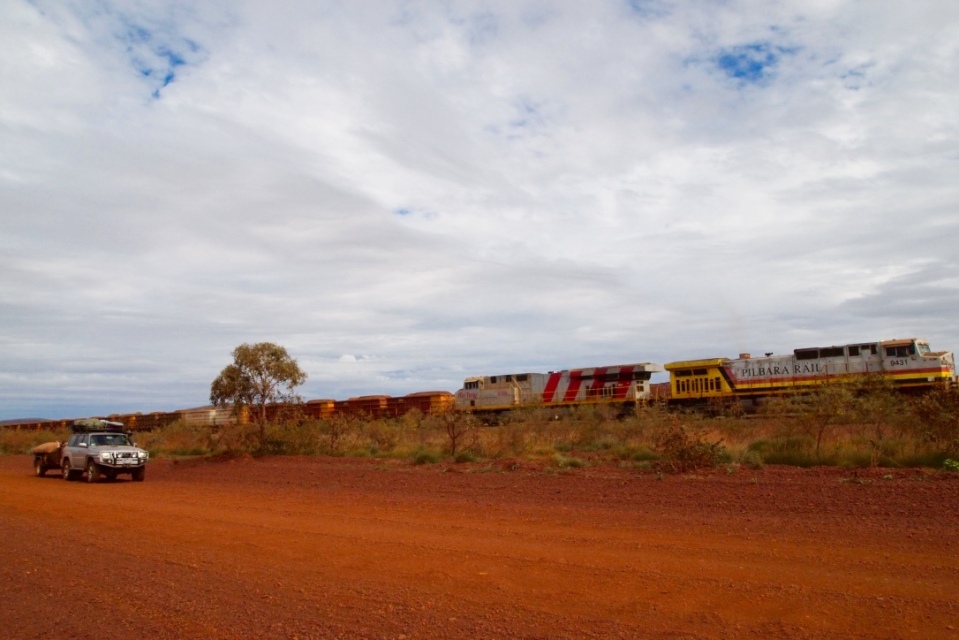Andrew obtained his permit to drive the Rio Tinto Railway Road. We were we would see lots of trains and we did. Trains with empty carriages were heading to Tom Price and trains full of Iron ore were heading for the coast to be exported to China. We happened to be stopped at an intersection as one train passed and the driver tooted much to the kids delight. The road was a good quality and well maintained with only minor corrugations and mostly Rio Tinto work vehicles passing. Aaron tried to count the carriages on the trains and he counted 210 but we were told each train had 300 carriages.
We saw eight different trains over three hours so despite the down turn in the ore exports there is still quite a lot of activity. In Tom Price talking to some locals the town has been feeling the reduction of industry and there were a number of people already made redundant with more redundancies expected. There is not much out here apart from tourism without the iron ore industry.
To break up the journey to the coast we headed to Millstream Chichester NP. This is a NP which was formerly part of a large sheep station and a local indigenous group population as it is situated along the Hamersley River. The old station homestead built in the early 1930s has some old artifacts and information about the area. We walked around the grounds and we amazed at the clear flowing water canals behind the house and the date palm forest. Palms are not native to the area, or even Australia, so must have been introduced by the station owners at some stage.
It was a beautiful area and nice for a brief stop over. We camped at the ‘stargazers’ camp ground which bush loos and reasonable spaced out camp sites but we chose this most because no generators allowed.











